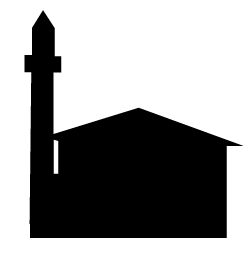Makhalakidzeebi
Makhalakidzeebi Mosque
Despite its poor condition, Makhalakidzeebi still manages to preserve a rich diversity of carved decoration. This mosque lacks the usual carved hijri date to mark its construction or renovation, but certain ornaments and architectural features place it in the Ottoman period, most likely the 1860s. One such feature is the ceiling recess (instead of a dome), which would once have held a carved wooden medallion. This medallion may be concealed by the new layer of plastic panels, molded to resemble coffers, currently covering the entire ceiling. The door carvings also suggest an earlier period, but while the braided motifs on the doorframe follow typical Ottoman era conventions, the door itself is less standard in its choice of imagery: vines sprout from an ewer or vase (at the bottom) and form two large medallions filled with artfully-arranged tulips and chrysanthemums. Much like Pirveli Maisi mosque, Makhalakidzeebi’s prayer hall contains a variety of hand-carved column details, many of which are unique and can even extend the full length of the column. In addition to intricate geometric patterns influenced by local folk art, some columns feature a motif resembling the borjgali: an ancient sun symbol found across Georgia (and featured on its currency, the tetri coin). As an older mosque, Makhalakidzeebi was unlikely to have had wall murals. Post-Soviet painting efforts have been haphazard, with some elements only partially completed and walls lined with spray paint stencils.
DISTRICT : Shuakhevi
LOCATION : 41°33’02.8”N 42°18’49.5”E
POPULATION : 315
CONSTRUCTION DATE : 1860s
RENOVATION DATE(S) : 1990s
CRAFTSMEN : unknown
MINARET : Yes

